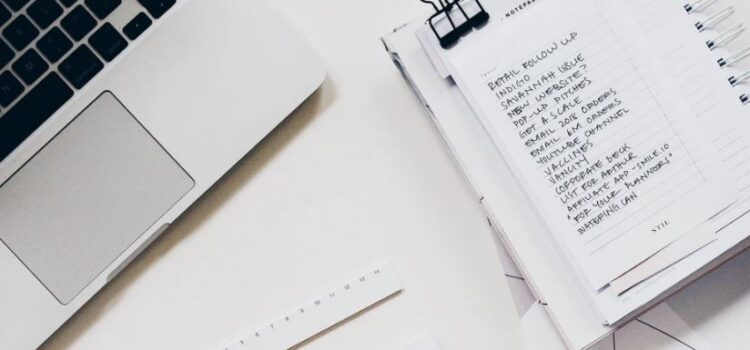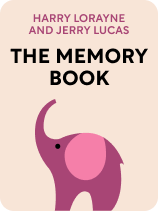

This article is an excerpt from the Shortform book guide to "The Memory Book" by Harry Lorayne and Jerry Lucas. Shortform has the world's best summaries and analyses of books you should be reading.
Like this article? Sign up for a free trial here.
Do you need to memorize information in a sequence for school or work? Do you always forget which US president came after James Buchanan?
Your brain has a natural affinity for associations. The Memory Book shows you how to use this skill to connect sequential pieces of information. This enables you to remember a full list of words in their original order.
Read more to learn how to memorize lists and use this skill in real life.
How to Memorize Lists
A fundamental memorization technique involves remembering sequences of information using image-based association. According to authors Harry Lorayne and Jerry Lucas, we always use association to commit things to memory, often subconsciously. In other words, we remember things in relation to each other, meaning we can recall anything if we link it to another piece of information we already know.
Lorayne and Lucas’s advice for how to memorize lists entails four steps. Let’s take a look at each, with several examples to help you grasp the techniques and put them to work.
(Shortform note: The associative nature of our memories starts at the cellular level—according to Foer in Moonwalking With Einstein, our brains are made up of a web of interconnected neurons. Physiologically, memories are arrangements of connections between these neurons, so no memories exist in isolation. To retrieve memories, we must search for pieces of information by thinking about other things that are connected to them in this neural web of associations.)
Step 1: Start With a List of Words
To practice this technique, you’ll first need a list of words. These can be anything, but Lorayne and Lucas suggest that nouns and verbs work best because they’re the easiest to picture. Your list can be as long or as short as you want it to be. For example, we’ll start with five words: moon, pencil, coffee, running, and cloud.
(Shortform note: If you have trouble thinking of a list of words or you want an extra challenge, consider using a random word generator to create your list. Many websites have settings that allow you to choose the word type, so you can limit it to verbs and nouns as the authors suggest. You can also choose the number of words you want the tool to generate.)
Step 2: Create a Strange Mental Image Connecting the First Two Words
Once you have your list, Lorayne and Lucas instruct you to begin memorizing the list by connecting the first two words. Do this by creating a mental image that associates the two words, specifically an image that’s illogical, strange, or silly.
(Shortform note: If you want your mental pictures to be memorable, there’s one element of them that you perhaps shouldn’t imagine in an unusual or illogical way: color. In one study, psychologists showed participants images of nature in black and white and in color. Later, they also showed images with natural colors and some with unnatural colors. Participants were able to remember the naturally-colored images the best, suggesting that there’s a link between our memory system and the world’s natural color makeup. If colors are too strange, our brain classifies them as unimportant and won’t retain the information we visualize with those colors.)
This association technique takes advantage of your brain’s visual-based memory and its tendency to remember unusual things. Coming up with a silly, illogical image also prompts you to consider the information closely, creating your foundational memory of it. The clearer you imagine your strange or silly association image, the more strongly you’ll commit it to memory.
Furthermore, Lorayne and Lucas suggest incorporating action into your mental image, as actions are easier to remember than static pictures. For instance, to create your association for the first two words on our example list from Step 1—moon and pencil—you might imagine that the moon has grown arms and is waving around a giant pencil.
(Shortform note: In Brain Rules, John Medina explains that visual aids for learning (like our unusual, active mental pictures) often involve action and motion because of how we evolved. Many predators that threatened the survival of early humans moved quickly, so our brains became highly adept at detecting motion. Thus, we pay close attention to moving images and are more likely to remember them.)
| How Advertisers Use Humor and Peculiarity to Create Memorable Commercials Advertisers take advantage of our tendency to remember humorous and strange information to create memorable commercials. Think of a commercial you can easily recall—it’s likely something bizarre, something that made you laugh, or both. According to some advertising experts, funny ads are easier to remember because we pay more attention to them than to non-humorous ads, thus creating the foundational memories that Lorayne and Lucas discuss. Other experts suggest that funny and bizarre ads are easy to remember because they defy our brain’s natural tendency to categorize information. Strange and funny commercials usually don’t match our brains’ existing categories for ads, so they stand out instead of blending in with countless others. Thus, we have an easier time recalling them (and may be more likely to buy from the company that created them). For example, the insurance company Allstate has used its Mayhem character—a humorous anthropomorphization of various destructive and unexpected situations—to create popular commercials for years. The bizarre nature of a human representing common mishaps makes otherwise stressful scenes feel funny and relatable. Paired with the dry and irreverent delivery of the comedian who plays Mayhem, this makes for a memorable ad campaign. |
Step 3: Form Connections Between All of the Words
After creating your association image between the first two words in the list, repeat Step 2 with the rest of the words. The authors state that the second word must be associated with the third, the third with the fourth, and so on.
For example, returning to our example list of words, your next task would be to create a silly mental image associating pencil with coffee. You might picture brewing a cup of coffee with pencil shavings instead of coffee grounds. Then, you’d associate coffee with running. Maybe you’d imagine a cup of coffee with legs running away from you when you try to drink it. Finally, you’d imagine something that connects running with cloud. This could be a runner who’s made out of clouds or someone running in the sky on a path of clouds.
You can repeat this step for a list of any length, as long as you take the time to form a clear, strange, and dynamic mental image between each pair of items on the list.
(Shortform note: For a slightly different take on image-based associations, some memory experts recommend creating a story linking the different items on your list into one narrative (instead of creating separate associations for each pair of items). For example, to remember our list of words, your story might go like this: Imagine yourself drawing a picture of the moon for your friend’s birthday, but then your pencil breaks, so you decide to buy them coffee instead. You’re late to their birthday party, though, so you start running to the coffee shop. On your way, you look up at the sky and worry that it might start raining because the clouds are dark.)
Step 4: Practice Frequently
Use the above steps to remember items in any list in their correct order by simply following your image associations down the list. According to Lorayne and Lucas, the best way to become better at this technique is to practice it frequently.
(Shortform note: Some experts argue that it takes 20 hours of practice to learn a new skill (such as Lorayne and Lucas’s memory techniques). This is long enough to achieve significant advancements in your skill level, but not so long that you feel too overwhelmed to start.)
Try creating your own list of words and developing original associations between them. Practice recalling the list in the correct order. As you exercise your imagination over time, it’ll become easier to create silly mental pictures, and your recall will require less effort.
(Shortform note: Practicing image-based association may do more than improve your recall—some psychologists assert that regular application of memory exercises can be as effective at promoting brain health as physical activity. These exercises are also an alternative to scrolling on your phone or doing mindfulness exercises, entertaining you while enriching your brain.)

———End of Preview———
Like what you just read? Read the rest of the world's best book summary and analysis of Harry Lorayne and Jerry Lucas's "The Memory Book" at Shortform.
Here's what you'll find in our full The Memory Book summary:
- How to improve your memorization skills and recall any kind of information
- Techniques for remembering sequences of information
- How to picture and remember abstract information






